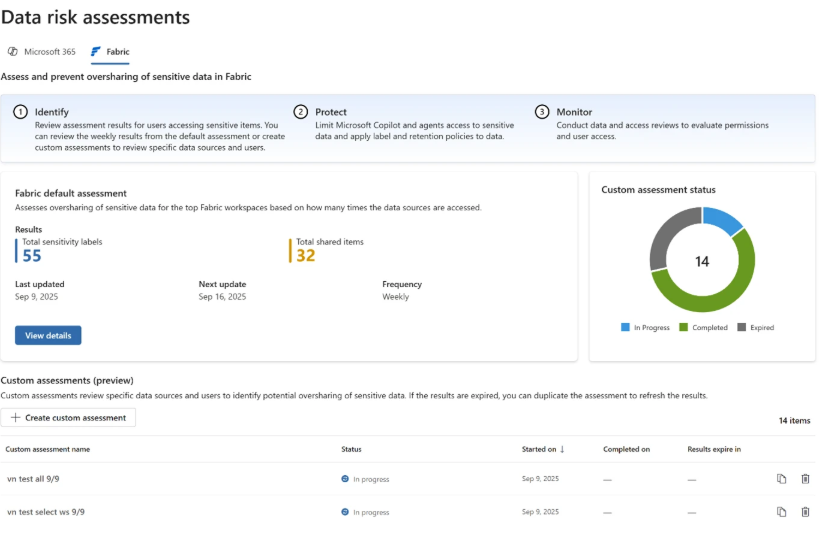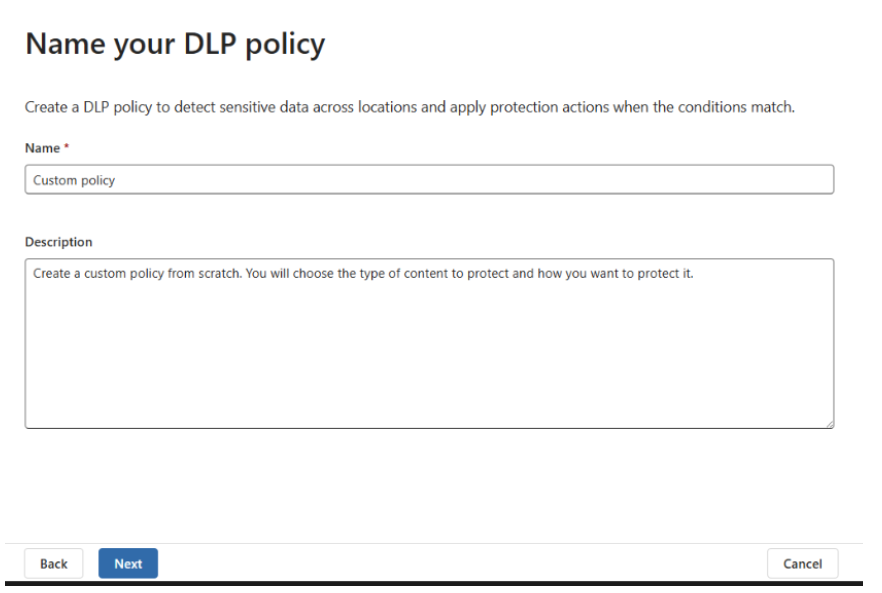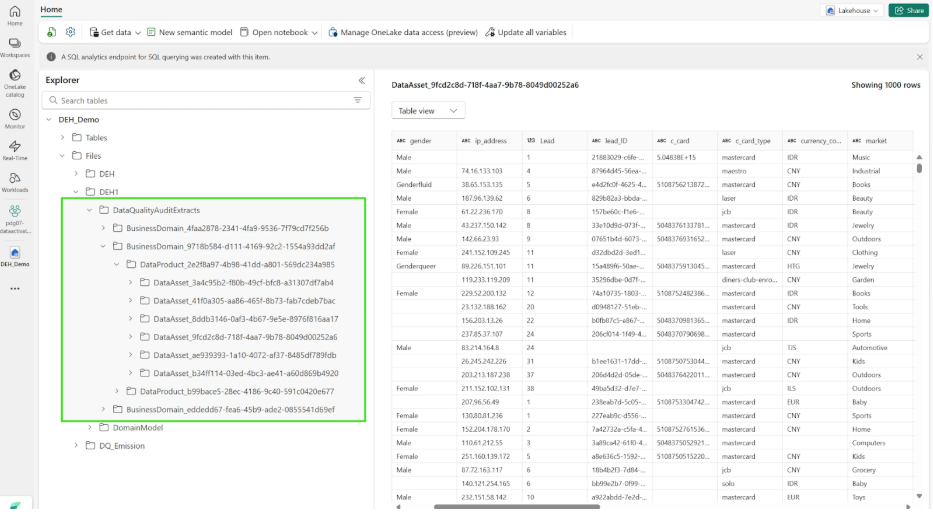A New Trust Architecture for the AI Enterprise
AI transformation is reshaping how enterprises create value — and it has surfaced a fundamental truth:
your AI is only as good as your data.
As organizations adopt copilots, generative assistants, and reasoning agents, they’re realizing that data quality, protection, and governance are not support functions — they are the foundation of trustworthy intelligence.
When incomplete or unprotected data fuels AI models, it leads to flawed insights, compliance exposure, and erosion of trust.
Microsoft reports that 99% of organizations have already experienced sensitive-data exposure through AI tools. The challenge isn’t intent — it’s structure. Most enterprises still treat security and governance as separate, disconnected controls.
To fix this, Microsoft is converging Microsoft Purview and Microsoft Fabric into one integrated foundation for responsible AI innovation.
This unification merges security, governance, and AI readiness into a single operating model — creating a trust layer that is embedded, not bolted on.
“When you unify security and governance, you’re not just protecting data — you’re protecting the future decisions that depend on it.”
— Gaurav Agarwaal
 Integrated Security and Governance for Fabric Data
Integrated Security and Governance for Fabric Data
Microsoft’s latest innovations unify discovery, protection, and governance within the same workspace — ensuring that every Fabric experience is secure by design and compliant by default.
Together, they define the next phase of AI-ready data protection.
1.Purview Information Protection & DLP for Fabric Items — Generally Available
Fabric users can now apply Purview Information Protection (MIP) sensitivity labels to lakehouses, reports, and datasets.
Access controls and Data Loss Prevention (DLP) policies automatically enforce those labels across OneLake, ensuring protection travels with the data.
“Innovation thrives on open data, but openness without boundaries invites risk. Labeling and DLP bring those boundaries to life — turning trust from policy into architecture.”
— Gaurav Agarwaal
 Technical Deep Dive
Technical Deep Dive
- Manual and automated labeling for Fabric artifacts using MIP sensitivity labels.
- DLP for structured data in OneLake now GA — detects oversharing and displays inline policy tips in dashboards and reports.
- Unified enforcement through Microsoft 365 Compliance Center ensures consistency across files, datasets, and analytics.
- As of Oct 2025: regional parity achieved; fine-grained table-level DLP scanning rolling out globally
2.Insider Risk Indicators for Power BI and Fabric
Purview Insider Risk Management now extends into Fabric, enabling behavioral risk analytics for activities like export, download, and relabeling.
Security teams can correlate anomalous user behavior with policy alerts — catching potential data misuse early.
“Protection isn’t just about walls; it’s about awareness. Behavioral analytics turn every action into a signal for trust.”
— Gaurav Agarwaal
Technical Deep Dive
- Monitors Power BI and Fabric events: exports, deletions, relabeling.
- Insider Risk dashboard visualizes active vs. resolved cases, alert trends, and behavioral correlations.
- Machine learning baselines adapt to workspace norms, reducing false positives.
- Case timelines let analysts trace data access patterns with context and intent.
3.Data Risk Assessments for Fabric (Preview)
As part of Purview Data Security Posture Management (DSPM), Fabric users can now run Data Risk Assessments to identify overshared or high-risk workspaces.
“Visibility is the first act of governance. You can’t protect what you can’t see — and DSPM makes the invisible visible.”
— Gaurav Agarwaal
Technical Deep Dive
- Scans top Fabric workspaces for oversharing and sensitive data exposure.
- Assigns exposure scores using Purview sensitivity metadata and sharing telemetry.
- Integrates with Sentinel for consolidated risk dashboards.
- H1 2026 roadmap includes anomaly detection for AI-generated content sharing.
4.Data Security & Compliance Controls for Copilot in Power BI — Generally Available
As Copilot becomes integral to Fabric, Microsoft introduces DSPM for AI — unifying oversight across all Copilot interactions.
Admins can detect sensitive data in prompts or responses, assess risks, and take automated actions within the same console.
Microsoft Security Blog, March 2025)
“The real milestone for AI isn’t capability — it’s confidence. Copilot governance ensures creativity never outruns control.”
— Gaurav Agarwaal
Technical Deep Dive
- DSPM dashboard monitors AI prompts and responses with integrated risk scoring.
- Audit, eDiscovery, and Retention now extend to Copilot logs.
- Device-level oversight for ChatGPT Enterprise and Gemini via Defender connectors.
- Oct 2025 update: GA support for Copilot in Fabric Notebooks and Dataflow Gen2.
Improving Data Discovery & Quality in Fabric
5.Unified Catalog for Comprehensive Data Visibility
The Purview Unified Catalog now integrates natively with Fabric, delivering a single source for metadata, lineage, and data discovery.
“Transparency is the new control plane. When everyone can see data lineage, trust becomes operational.”
— Gaurav Agarwaal
Technical Deep Dive
- Automated metadata ingestion keeps Purview synchronized with Fabric workspaces.
- Lineage visualizations show upstream/downstream connections across OneLake and Power BI.
- Assets can be enriched with glossary terms, classifications, and attributes.
- Oct 2025 API updates allow lineage export into Power BI scorecards and Fabric Monitoring Hub.
6.Custom Business Attributes and Glossaries
Purview now supports custom business attributes and glossaries that translate technical metadata into business language.
“Data only becomes intelligent when everyone speaks its language. Custom attributes make governance conversational.”
— Gaurav Agarwaal
Technical Deep Dive
- Define attributes like Business Domain, Critical Data Element, and Data Product Tag.
- Map glossary terms to columns for shared understanding.
- Integrates with Fabric observability APIs to show quality by domain.
- Supports CI/CD-driven attribute updates through DevOps pipelines.
Source: Microsoft Security Blog, May 2025)
7.Published Error Records for Data Quality Remediation
Fabric OneLake now includes Published Error Records, allowing teams to spot and fix data-quality issues directly within the workspace.
“Quality is the quiet side of trust. When errors are visible, accountability becomes collective.”
— Gaurav Agarwaal
Technical Deep Dive
- Displays schema mismatches, nulls, or invalid rows inline.
- Filter by Business Domain or Data Product for quick remediation.
- Logs exportable to Azure Monitor for traceability.
- Next release adds feedback loops into Purview’s Data Quality Service.

| Source: Microsoft Security Blog, March 2025)
The Strategic Convergence: Why It Matters
The convergence of Purview and Fabric isn’t just a product alignment — it’s an architectural rethink.
Historically, governance ensured consistency while security enforced access.
In the AI era, these boundaries collapse:
- Governance without protection is fragile.
- Security without governance is blind.
Embedding Purview directly into Fabric ensures that protection, lineage, and accountability move with the data — from ingestion to inference.
This is trust by design, not trust by documentation.
“In the AI enterprise, trust isn’t a department — it’s infrastructure.”
— Gaurav Agarwaal
What CXOs Should Do Next
The convergence calls for one principle above all — data transparency under the Chief Data Officer.
This is how leadership turns governance into acceleration, not obstruction.
1.Elevate Data Transparency Under the CDO
- Build a unified view of lineage, sensitivity, and sharing posture.
- Generate a quarterly Data Trust Scorecard using Fabric and Purview APIs.
- Let this scorecard anchor board-level discussions on AI readiness and ethics.
2.Redesign DLP and Insider Risk Around Real Workflows
- Map controls to business journeys — not systems.
- Correlate risk signals from Purview and Fabric to identify anomalies early.
- Track outcomes by reduction in unclassified or overshared data.
3.Operationalize DSPM for AI Governance
- Treat every Copilot, model, or agent as a governed data user.
- Expand oversight from compliance tracking to trust readiness.
- Link AI oversight to Responsible AI principles — fairness, explainability, and safety.
4.Make the Unified Catalog a Collaboration Platform
- Let domain teams tag, annotate, and rate datasets by reuse potential.
- Feed observability and quality metrics into business scorecards.
- Position the catalog as the living bridge between engineering and business.
5.Turn Data Quality into Shared Accountability
- Use Published Error Records to co-own fixes between data and business teams.
- Tie data-quality SLAs to impact metrics like decision latency and model accuracy.
- Treat transparency and quality as two sides of the same trust equation.
Outcome: CXOs institutionalize a culture of clarity — where trust is not managed, it’s measurable.
Looking Ahead: Trust as Infrastructure (18–24 Months)
Over the next 18–24 months, trust will evolve from an overlay to an operational property of enterprise systems.
Purview and Fabric are turning governance into a built-in capability — portable, contextual, and verifiable.
1. Trust Moves into the Data Plane
- Policy as code and portable labels travel with every dataset and report.
- Queryable lineage graphs reveal who changed what, when, and why.
- Embedded transparency shows ownership and quality directly inside workflows.
Outcome: protection keeps pace with innovation.
2. Ontology-Led Metadata (the Backbone for Clarity)
- An enterprise ontology unifies domains, entities, and policies into one semantic layer.
- Shared definitions ensure labels, quality rules, and policies speak the same language.
Outcome: consistent lineage, faster discovery, and cross-domain trust.
3. Elastic Metadata & Meta-Metadata (the Engine for Learning)
- Elastic metadata balances governed core fields with lightweight business extensions.
- Meta-metadata signals (trust score, usage frequency, last verified) drive pattern recognition and intelligent discovery.
Outcome: Data Products improve themselves through use, not bureaucracy.
4. Trust Governs AI in Real Time
- Context-aware guardrails evaluate prompts and agent actions before execution.
- Continuous validation adjusts access when data quality or risk changes.
- Inline governance keeps work flowing while ensuring safety.
Outcome: AI operates responsibly by default.
5. Trust Becomes Portable and Human-Visible
- Traceable data journeys show where information came from, how it was used, and by whom.
- Purpose- and region-aware routing ensures the right data stays in the right place.
- Reusable trust services expose classification, lineage, and risk checks as building blocks.
Outcome: any application or AI model can inherit enterprise trust effortlessly.
“In the next two years, enterprises won’t add trust — they’ll operate on it.”
— Gaurav Agarwaal
Views: 3.4K


So much value packed into one post!